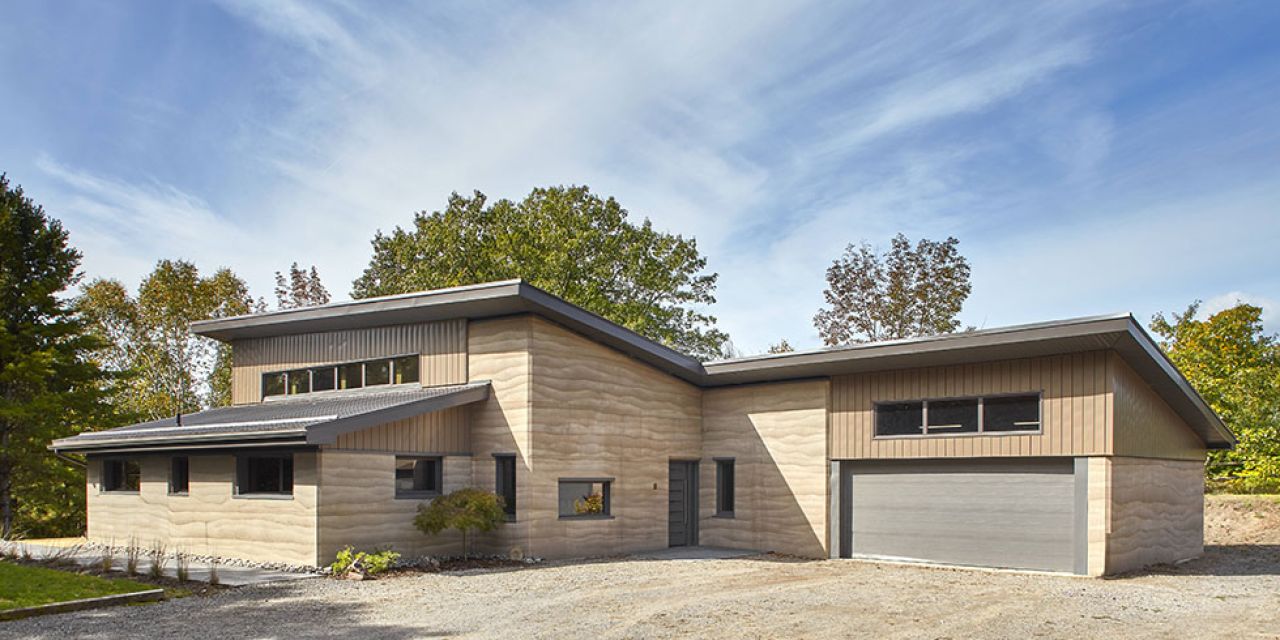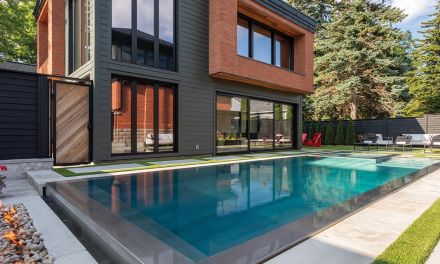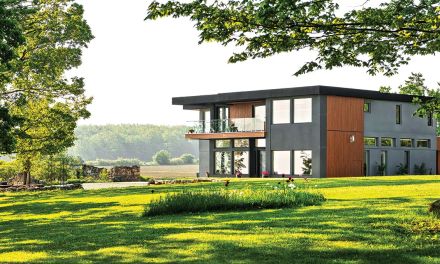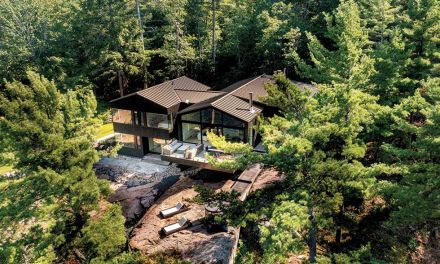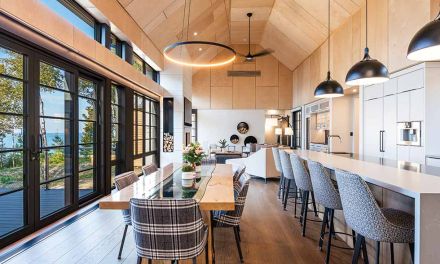What on Earth?
by Marc Huminilowycz
Rammed earth, a centuries-old construction method, involves compacting a mixture of soil, sand and clay, to create walls. The result is excellent thermal mass, low environmental impact, and natural aesthetics.
With climate change in sharp focus these days, some of us may wonder what we can do to reduce our carbon footprint. The answer can be found close to home. According to the latest statistics, the energy needed to heat, cool, and electrify our homes accounts for about 17% of Canada’s total greenhouse gas emissions. Considering building materials and construction, that number is closer to 30%.
The good news is that, from quality, performance, and safety perspectives, Canada has a reputation for having one of the best standards of building construction in the world. And Ontario’s building code, with respect to home energy efficiency, is considered one of the most advanced in North America.
Choosing to go beyond the building code, many Ontario builders and developers are taking a few steps further to offer better, more energy-efficient homes to their clients. The techniques and specifications they use vary in the way they achieve energy savings better than code, including Energy Star—20%-30% better; Passive House—80% better; Net Zero (homes that produce as much energy as they use)—100% better; and LEED, an environmental performance system that considers water usage, site sustainability, and materials used.
One Ontario builder, Doug Tarry Homes in St. Thomas, prides itself on building every home in its developments to the “Net Zero Ready” standard (optional full Net Zero with the addition of solar panels)—more than any other builder in Canada. Closer to home, every eco-modern residence in a planned country-coastal development in Meaford by developer Sinclair Homes will be full Net Zero.

Photo: Riley Snelling
While other builders opt for their own methods to achieve better energy efficiency, comfort, and indoor air quality, a few basic elements are common to all techniques: an airtight building envelope, superior insulation, strategically oriented thermal windows and roof overhangs, high-performance heating/cooling systems, and continual air exchange.
For those who choose to build their custom dream home, doing their part to reduce greenhouse gas emissions doesn’t mean sacrificing style and luxury. The energy-saving features built into walls, windows, ceilings, and in the mechanical room do their job to optimize efficiency, comfort, and air quality. Homeowners can work with their architect, builder, and interior designer to create one-of-a-kind designs that express their style in a way that also makes a statement about environmental responsibility.
Aerecura Sustainable Builders, an Ontario company with several projects in the Grey-Bruce and Prince Edward County regions, constructs homes using a modern adaptation of an ancient building method called rammed earth, which dates back to 9,000 BCE Neolithic settlements. Rammed earth construction involves compressing an earthen mixture into form-work to create high-performance spaces that are efficient, comfortable, and beautiful. Project manager Andrew Dzenis, a Grey-Bruce resident, is Aurecura’s general contractor for the Owen Sound region.
The exterior walls of the homes are constructed from a natural building material—a blend of leftover gravel and sand from local quarries, mixed with a binding agent. This mixture is compacted (or rammed) on-site into forms, which include a layer of insulation material, to create twenty-inch-thick rock walls. The result is a very solid structure that far exceeds building code standards, durable enough to withstand Ontario’s weather extremes for many years to come, yet visually stunning in appearance.
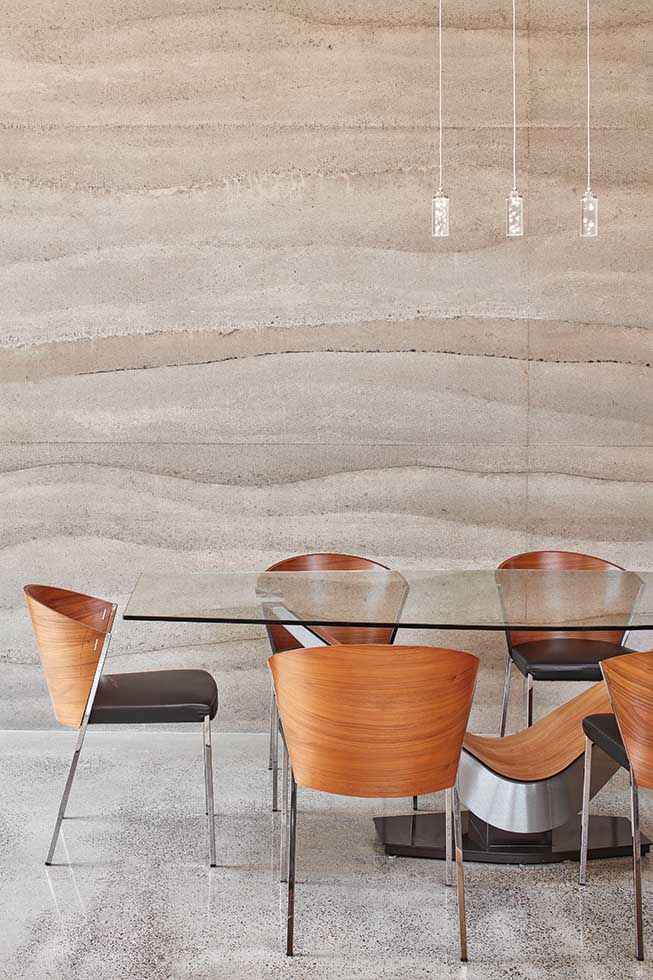
Photo: Riley Snelling
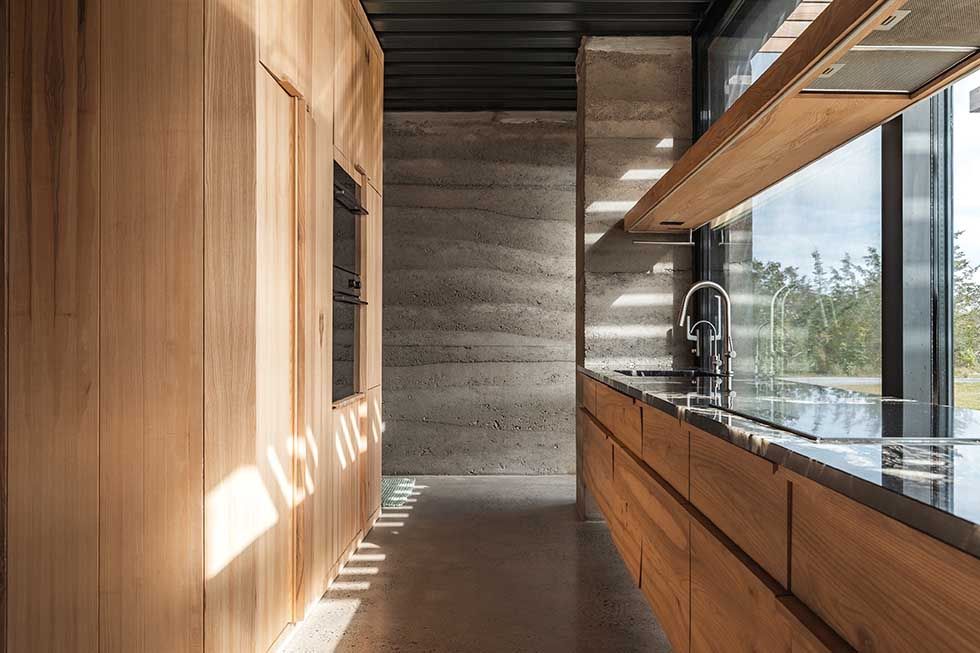
Photo: One Look Photography
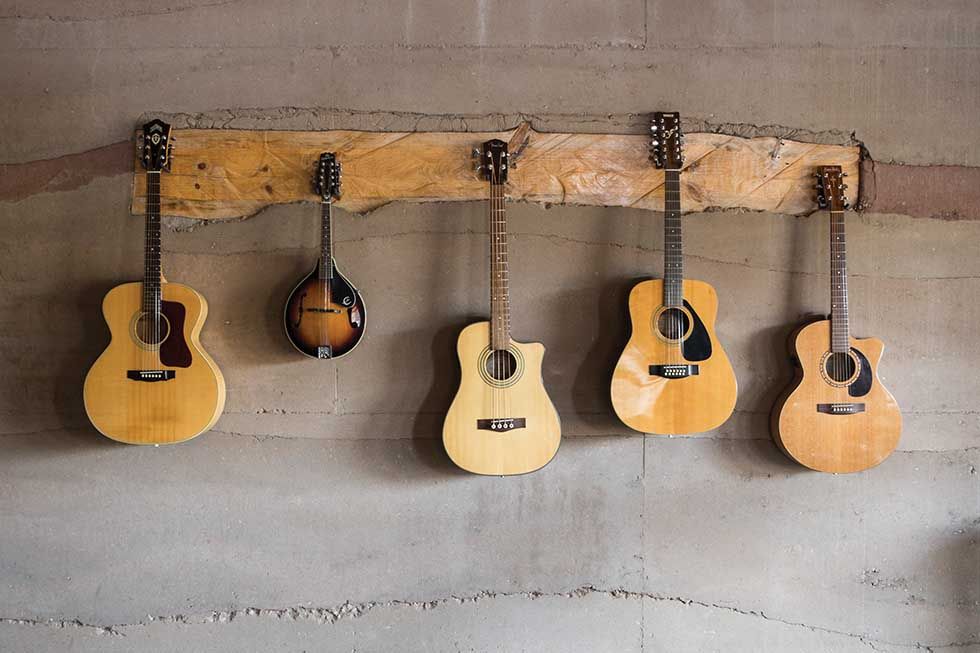
Photo: Riley Snelling
According to Aerecura founder and CEO Sylvia Cook, each wall in the home (exterior and interior) can be customized for colour and striation by adding iron oxides in different combinations and amounts. “Rammed earth is like a work of art,” she says. “The colours can be subtle or dramatic, and the pattern of striations can be thick or thin, flat or wavy, resulting in earth tones and textures that create a cozy and welcoming atmosphere like no other. Its natural beauty harmonizes with surrounding nature and responds to the play of light, ever-changing as sunlight shifts to clouds, moonlight to dawn, and sunset to interior lighting.” Customers can choose to build a complete rammed earth home or simply include one rammed earth feature wall in their design.
Beyond their aesthetic appeal, durability, and superior insulation and airtightness, rammed earth homes provide an incredibly comfortable and quiet living environment with the added benefit of exceptional air quality. “Rammed earth’s superpower is ‘thermal mass’—the ability of the material to absorb, store, and release heat,” Cook explains. “The walls maintain a constant temperature of 18ºC, absorbing heat from sunlight, appliances, electronic devices, and even people and pets during the day, then gradually releasing it back into the interior spaces at night.”
Cook acknowledges that a small amount of extra heat, typically supplied by an electric heat pump, is required. But she maintains that, with the home’s high-performance triple-pane windows, strategic roof overhangs, and “passive ventilation” design, it’s easy for homeowners to maintain comfortable temperatures year-round.
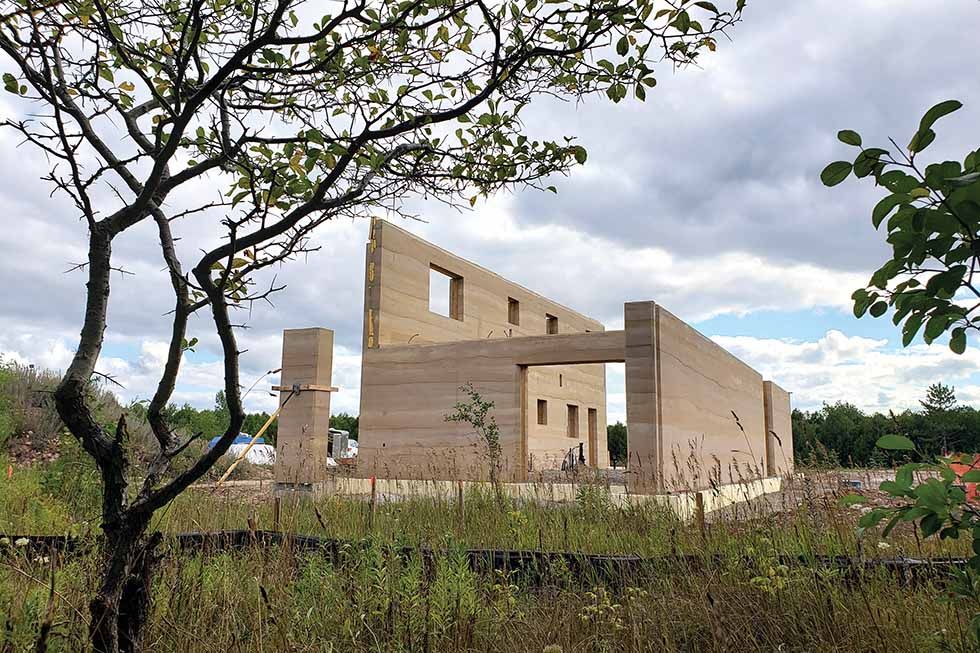
Photo: Andrew Dzenis
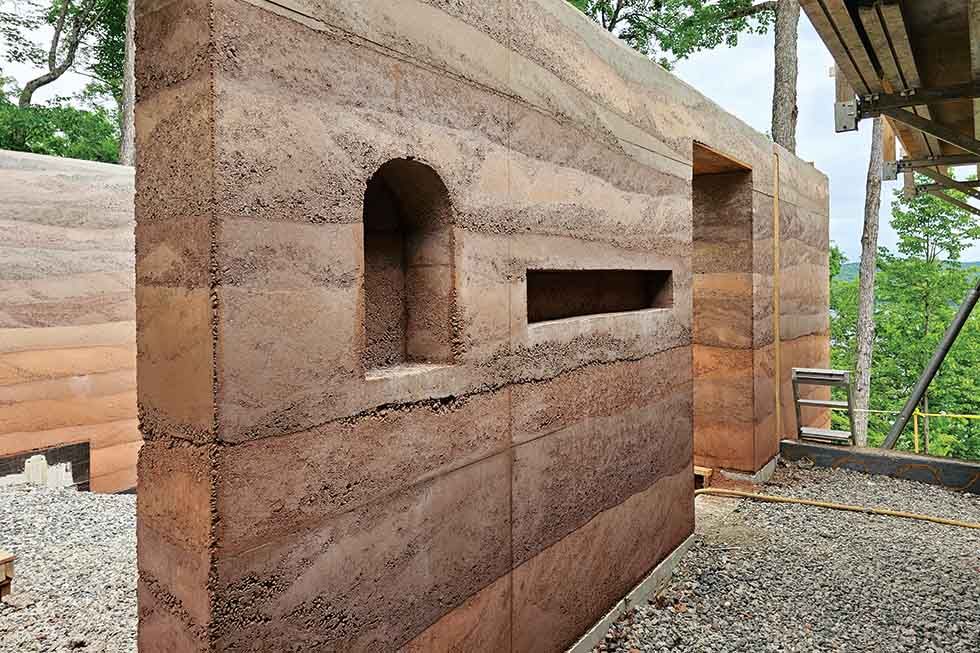
Photo: Andrew Dzenis
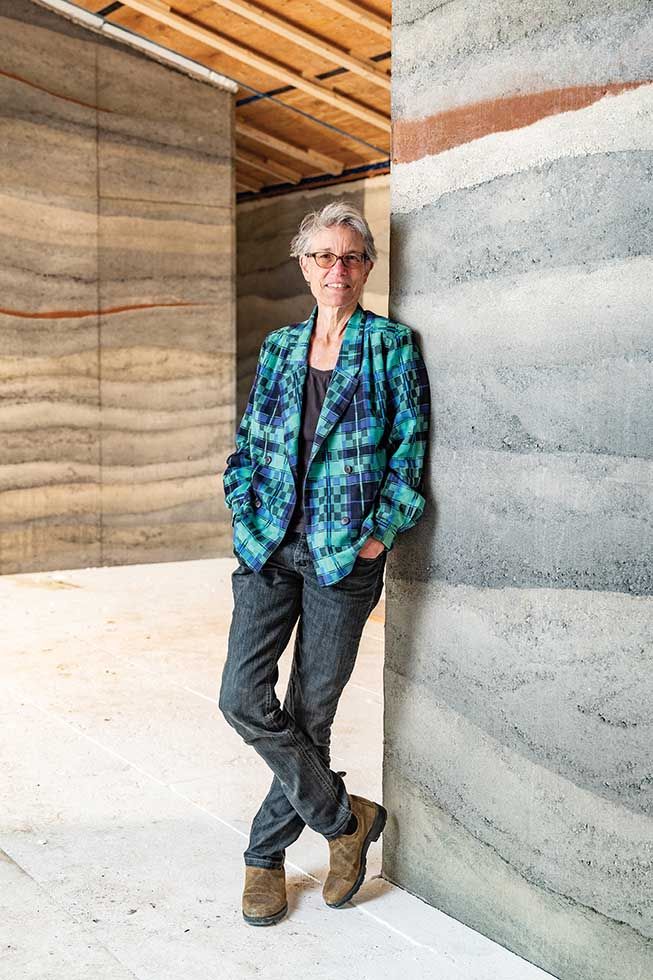
Aerecura founder and CEO, Sylvia Cook. Photo: Johnny C.Y. Lam
“Healthy indoor air quality is a hallmark of our homes,” says Cook. She recalls an event a number of years ago when forty people toured one of her company’s rammed earth homes. “It was 40ºC with the humidex outside, but inside, people thought the air conditioning was running,” she says. Because of their “hygroscopic” properties, rammed earth walls absorb humidity, keeping indoor humidity levels at a consistent 55%—perfect for Ontario’s damp winters and hot, humid summers. And, because the walls are free of organic materials, they eliminate the risk of mold and toxins. Their absorptive qualities leave only clean, fresh air—a good choice for people with respiratory issues, indoor allergies, or chemical sensitivities.
As the planet changes and weather patterns become more extreme, it’s reassuring to see an increase in innovative building solutions that are both eco-friendly and aesthetically pleasing. Rammed earth homes exemplify this trend, offering a unique blend of beauty, durability, and environmental sustainability, ensuring comfortable and contemporary living while treading lightly on the Earth. E

